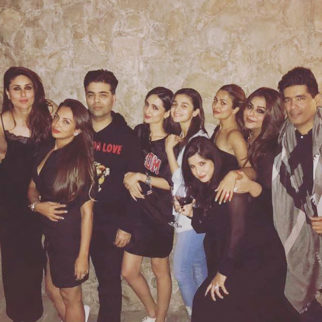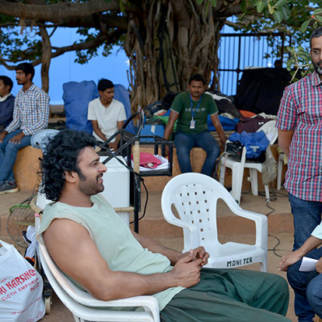People behind the Scenes: Arv Grewal on Resident Evil: Afterlife – Part II
-
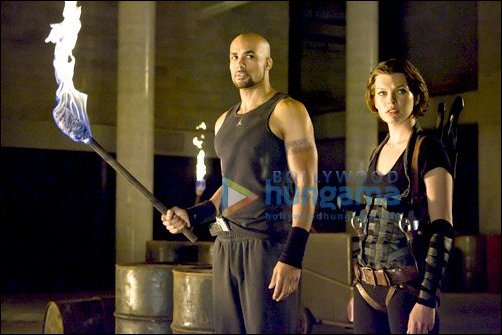 What was the most expensive stunt of the film? The opening sequence where the Alice clones descend on Umbrella Corporation was probably the most expensive. There was a lot of wirework, gunfire, explosions, breakaway walls, shattering glass, Read More">then chroma work for the dives and the kills etc. Is there something new that you did inRead More
What was the most expensive stunt of the film? The opening sequence where the Alice clones descend on Umbrella Corporation was probably the most expensive. There was a lot of wirework, gunfire, explosions, breakaway walls, shattering glass, Read More">then chroma work for the dives and the kills etc. Is there something new that you did inRead MoreWhat was the most expensive stunt of the film?
The opening sequence where the Alice clones descend on Umbrella Corporation was probably the most expensive. There was a lot of wirework, gunfire, explosions, breakaway walls, shattering glass, then chroma work for the dives and the kills etc.
Is there something new that you did in this film that may be an innovation in terms of technology or equipment?
Our Director of Photography, Glen MacPherson managed to take 3d cameras underwater. I believe that this is a first for these cameras. -
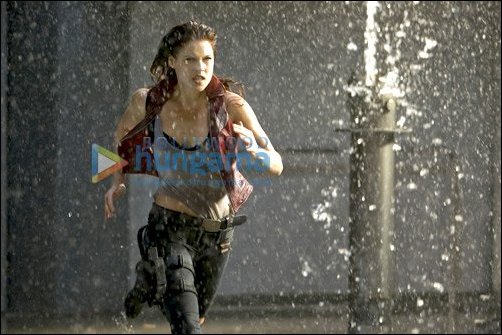 Was there something in the film that was not worth spending? General opinion seems to dictate that if it’s not on screen very long, don’t put a lot of money into it. This is a specious argument though, Read More">because the process of storytelling is really going to dictate what’s going to stay in the movieRead More
Was there something in the film that was not worth spending? General opinion seems to dictate that if it’s not on screen very long, don’t put a lot of money into it. This is a specious argument though, Read More">because the process of storytelling is really going to dictate what’s going to stay in the movieRead MoreWas there something in the film that was not worth spending?
General opinion seems to dictate that if it's not on screen very long, don't put a lot of money into it. This is a specious argument though, because the process of storytelling is really going to dictate what's going to stay in the movie and what has become superfluous to the story and is therefore cut out of the movie, even though the money is already spent. We didn't build any sets that weren't shown in the film. We did build a couple of pricey sets that weren't in the film for very long, but were crucial enough as they were needed to advance the action and the story.
Did the director give you a hard time with budget?
Not the director, but Paul Anderson was also a producer on this film and he definitely wanted everyone to be budget conscious. It took a lot of determination and clever design to give this movie the polished look it had for the amount of money that was apportioned to the Art Department. Generally though, most filmmakers would agree that regardless of the size of a movie, there's never ever enough money. You want to give each film the best look you can and that means stretching every single dollar as you stretch your imagination to come up with some -
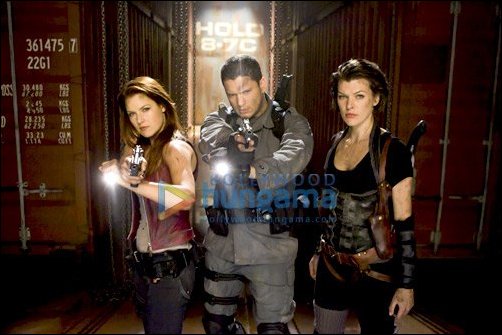 What were the most complex and the most expensive set, of Resident Evil: Afterlife? The prison roof set we built was the most expensive. The expense though was amortized, Read More">as we used this set for the prison base where the gates were and also for parts of the interior of the prison. The most complexRead More
What were the most complex and the most expensive set, of Resident Evil: Afterlife? The prison roof set we built was the most expensive. The expense though was amortized, Read More">as we used this set for the prison base where the gates were and also for parts of the interior of the prison. The most complexRead MoreWhat were the most complex and the most expensive set, of Resident Evil: Afterlife?
The prison roof set we built was the most expensive. The expense though was amortized, as we used this set for the prison base where the gates were and also for parts of the interior of the prison. The most complex set was the prison shower set where we had moving walls on wheels; a pit was dug into the stage floor to accommodate part of the tunnel work; the beams above the set were on rollers so that they could be instantly moved for the camera for the big wide overhead shots; there were breakaway walls for the axe-man sequence; breakaway tiles on the walls; shower towers which were smashed by the Axeman and gushed water causing it to rain inside the room, etc. It was quite a challenging set, but I think it paid off beautifully.
What was your biggest challenge in this film in terms of crew and cast organization?
The biggest challenge for everyone was the 3-d process. We had to figure out what materials and textures worked with 3-d and what didn't. Things like fog and smoke don't work very well with 3d cameras, so this had to be accomplished through lighting; then in order to accommodate lighting we had to bring sets inside on a sound stage adding to the expense and the time it takes to construct these sets. Also because the film was shot in 3d, we had to design for 3d. This meant not letting the film constantly poking at you, but for the most part letting the medium express itself and then when the moment called for it really letting the 3d grab excites you. -
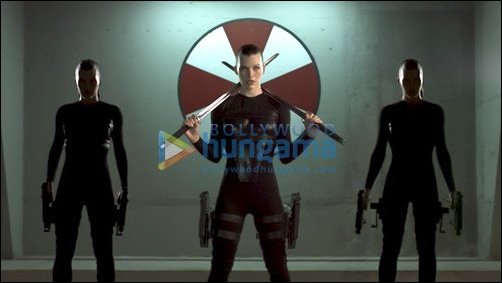 How did you co-ordinate and organize the cg team? The CG team was organized by Denis Berardi, whose company Mr. X did the cg work on RE: Afterlife. I was involved very early on in the pre-production process. The art department will get to them as many designs as possible as possible, Read More">so that theyRead More
How did you co-ordinate and organize the cg team? The CG team was organized by Denis Berardi, whose company Mr. X did the cg work on RE: Afterlife. I was involved very early on in the pre-production process. The art department will get to them as many designs as possible as possible, Read More">so that theyRead MoreHow did you co-ordinate and organize the cg team?
The CG team was organized by Denis Berardi, whose company Mr. X did the cg work on RE: Afterlife. I was involved very early on in the pre-production process. The art department will get to them as many designs as possible as possible, so that they may start their work of 3d modelling of these sets and put together animatics that will give the director and everyone else an idea of how a sequence will eventually come together as a combination of actual physical sets and computer generated images. I also give to them, after the director's approval, research and conceptual design and working design on what the look and built form of various components of the film will look like; for example, the look of burning Los Angeles, the prison itself, the exterior of the futuristic helicopters and every other set in the film as RE: Afterlife must have cg work on virtually half the movie if not more.
What locations did you have to shoot in? Did you have options?
The crash landing of the plane on the roof of building was done indoors on a built set as was most of the prison. We went to a building on the grounds of the University of Toronto for a big interior prison scene. We also took over an airfield and a beautiful beach some distance from Toronto for the Alaska scenes. Our sewer and tunnel scenes and the underground entrance to the Umbrella Corporation where Alice kills all the guards were done in an abandoned roller skating rink. The pods where the central command for Umbrella Corporation is were in a building on the grounds of the University of Toronto. We then re-built this on our sound stage to do all the explosions and gunfire. -
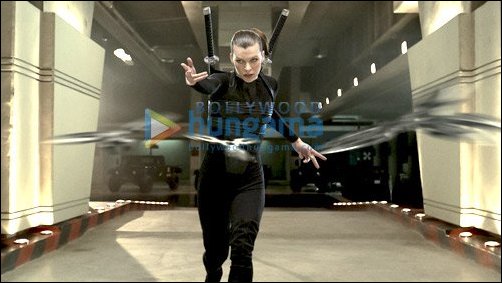 How did Resident Evil: Afterlife come to you? When it was decided that Resident Evil: Afterlife was going to be filmed in Toronto, they looked me up and asked me to come in for a meeting. Anderson was very impressed with my work on a Bruce Willis movie, 16 Blocks, Read More">directed by the great RichardRead More
How did Resident Evil: Afterlife come to you? When it was decided that Resident Evil: Afterlife was going to be filmed in Toronto, they looked me up and asked me to come in for a meeting. Anderson was very impressed with my work on a Bruce Willis movie, 16 Blocks, Read More">directed by the great RichardRead MoreHow did Resident Evil: Afterlife come to you?
When it was decided that Resident Evil: Afterlife was going to be filmed in Toronto, they looked me up and asked me to come in for a meeting. Anderson was very impressed with my work on a Bruce Willis movie, 16 Blocks, directed by the great Richard Donner. During the meeting it was obvious that we all wanted to work together and had a similar view about the intended design for RE: Afterlife.
How did you organize the stunts in the film resident evil?
The art department and I worked out the stunt/SPFX choreography with the Stunt Co-ordinator, the Special Effects Co-ordinator and the director very early on in the process. A significant part of this also meant keeping in mind the large 3-d camera team and their camera and lighting requirements as well. So with all these departments in mind, I started to design the sets and as we got significant portions of each set constructed, we would do rehearsals with all the involved departments and alter anything that was necessary to suit the action.
